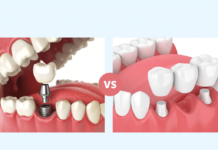Orthodontic treatment has evolved significantly over the years, offering patients a range of options beyond traditional metal braces. For those seeking to enhance their smile without the visibility and discomfort of conventional braces, alternatives abound. Understanding these alternatives, their benefits, and how an orthodontist can guide you in choosing the best option is essential for informed decision-making.
Understanding Braces Alternatives
Braces alternatives encompass various orthodontic devices designed to correct misaligned teeth and jaws. These options cater to diverse patient needs, preferences, and lifestyle considerations. Key alternatives include:
- Clear Aligners
- Lingual Braces
- Ceramic Braces
- Retainers
Each option has unique advantages, and the choice largely depends on individual circumstances, including the severity of the dental issue, aesthetic preferences, and treatment goals.
Clear Aligners
Clear aligners, such as Invisalign, are one of the most popular braces alternatives available today. Made from transparent, medical-grade plastic, these aligners are custom-fit to the patient’s teeth.
Advantages of Clear Aligners:
- Aesthetic Appeal: Their clear design makes them virtually invisible, allowing patients to straighten their teeth discreetly.
- Comfort: Smooth plastic eliminates the discomfort often associated with metal brackets and wires.
- Removability: Patients can remove aligners for eating, brushing, and flossing, promoting better oral hygiene.
However, clear aligners may not be suitable for all cases, particularly complex orthodontic issues. Consulting with an orthodontist can help determine if this option is appropriate.
Lingual Braces
Lingual braces are another effective alternative that offers a hidden solution for those concerned about aesthetics. Unlike traditional braces, lingual braces are placed on the back of the teeth, making them invisible from the front.
Benefits of Lingual Braces:
- Discreetness: They provide a virtually invisible treatment option.
- Effective for Complex Cases: Lingual braces can treat various dental issues, including severe misalignments.
Despite their advantages, lingual braces can be more challenging to clean and may cause initial discomfort as patients adjust.
Ceramic Braces
Ceramic braces offer a middle ground between metal braces and other alternatives. Made from clear or tooth-colored materials, they blend more naturally with the teeth, providing a less noticeable option.
Advantages of Ceramic Braces:
- Aesthetic Appeal: They are less visible than traditional metal braces.
- Effective Treatment: Like metal braces, ceramic braces can treat a wide range of orthodontic issues.
However, ceramic braces may be more susceptible to staining and are generally more fragile than metal counterparts. Regular visits to the orthodontist are essential for monitoring progress and maintaining the integrity of the braces.
Retainers
Retainers are primarily used after active orthodontic treatment to maintain teeth positions. However, certain types of retainers, such as fixed or removable ones, can serve as preventive measures for minor alignment issues.
Benefits of Retainers:
- Maintenance of Results: Retainers prevent teeth from shifting back to their original positions post-treatment.
- Less Obtrusive: Removable retainers allow for flexibility in wear.
Retainers can sometimes serve as a preliminary treatment option for mild cases, and discussing this with an orthodontist can clarify their role in overall treatment.
The Role of the Orthodontist
Navigating braces alternatives necessitates the expertise of an orthodontist. These specialists possess the knowledge and training to evaluate individual dental situations comprehensively. During an initial consultation, an orthodontist will:
- Assess Dental Alignment: Conduct a thorough examination of teeth and jaw alignment.
- Discuss Treatment Goals: Understand the patient’s aesthetic preferences, lifestyle, and specific concerns.
- Recommend Options: Provide a tailored treatment plan that may include one or multiple braces alternatives.
The orthodontist’s role is critical in ensuring that patients make informed decisions based on their unique needs, helping them weigh the pros and cons of each alternative.
Conclusion
Choosing the right orthodontic treatment involves careful consideration of various braces alternatives. From clear aligners and lingual braces to ceramic braces and retainers, each option offers distinct benefits tailored to different patient needs. The guidance of an experienced orthodontist is invaluable in navigating these options, ensuring a successful and satisfying outcome in achieving a healthy, beautiful smile. As orthodontic technology continues to advance, patients can expect even more innovative solutions in their journey toward dental alignment.




